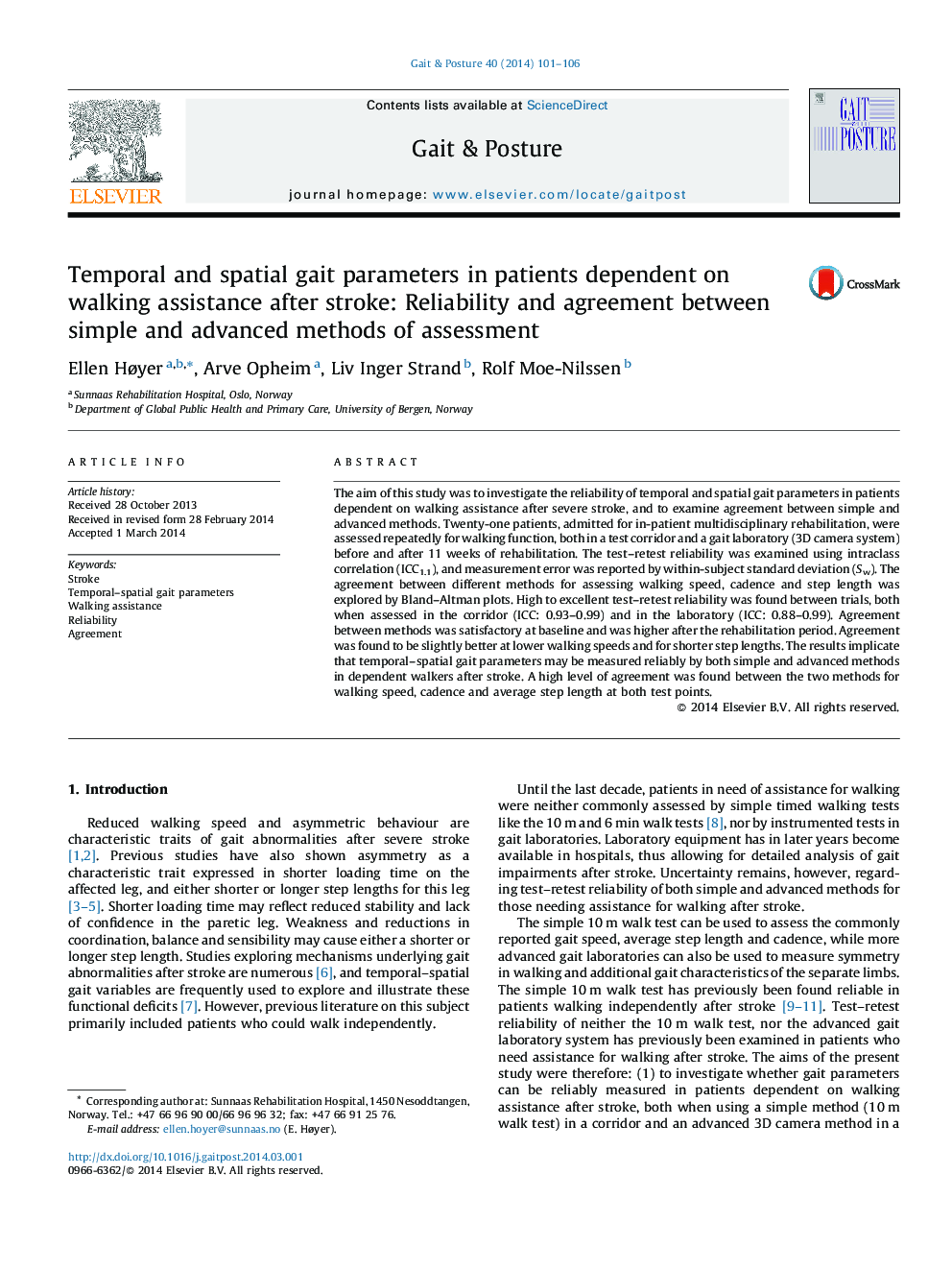| Article ID | Journal | Published Year | Pages | File Type |
|---|---|---|---|---|
| 6206456 | Gait & Posture | 2014 | 6 Pages |
â¢Gait parameters may be measured reliably in dependent walkers after stroke.â¢A simple and an advanced assessment method achieved high test-retest reliability.â¢Agreement between the methods was high for walking speed, cadence and step length.
The aim of this study was to investigate the reliability of temporal and spatial gait parameters in patients dependent on walking assistance after severe stroke, and to examine agreement between simple and advanced methods. Twenty-one patients, admitted for in-patient multidisciplinary rehabilitation, were assessed repeatedly for walking function, both in a test corridor and a gait laboratory (3D camera system) before and after 11 weeks of rehabilitation. The test-retest reliability was examined using intraclass correlation (ICC1.1), and measurement error was reported by within-subject standard deviation (Sw). The agreement between different methods for assessing walking speed, cadence and step length was explored by Bland-Altman plots. High to excellent test-retest reliability was found between trials, both when assessed in the corridor (ICC: 0.93-0.99) and in the laboratory (ICC: 0.88-0.99). Agreement between methods was satisfactory at baseline and was higher after the rehabilitation period. Agreement was found to be slightly better at lower walking speeds and for shorter step lengths. The results implicate that temporal-spatial gait parameters may be measured reliably by both simple and advanced methods in dependent walkers after stroke. A high level of agreement was found between the two methods for walking speed, cadence and average step length at both test points.
